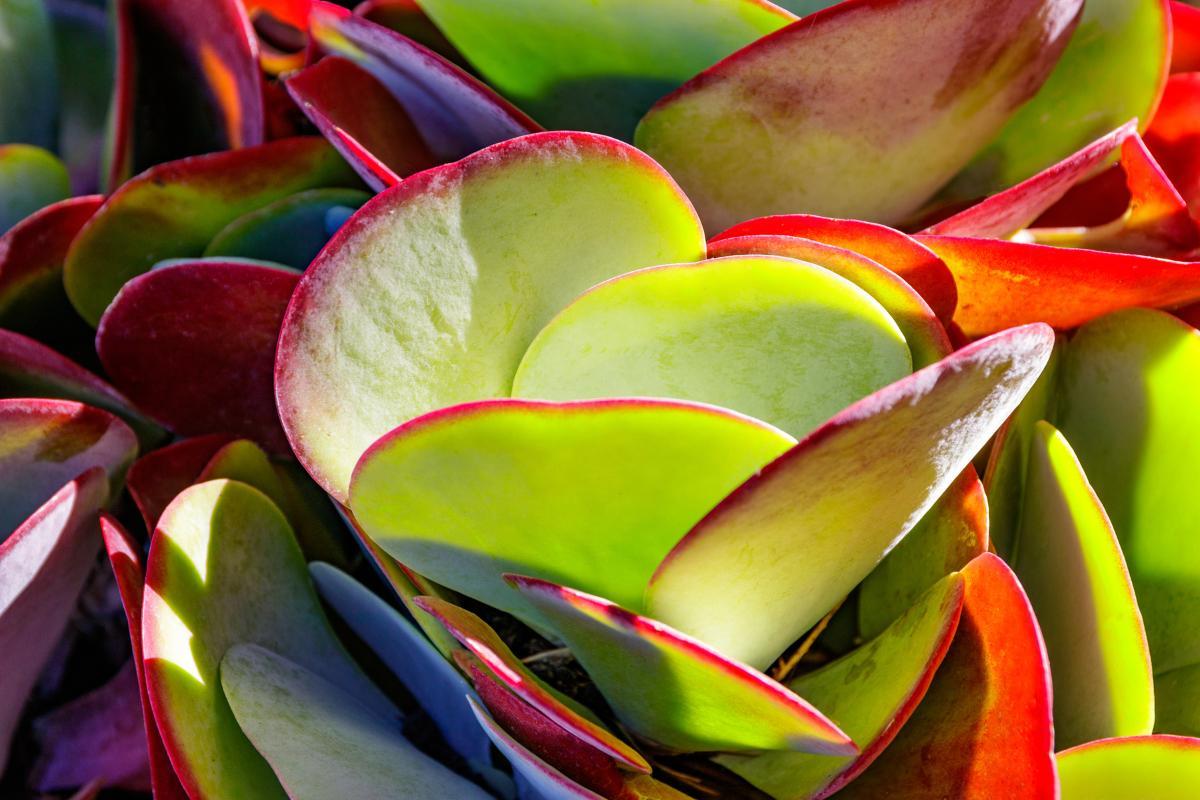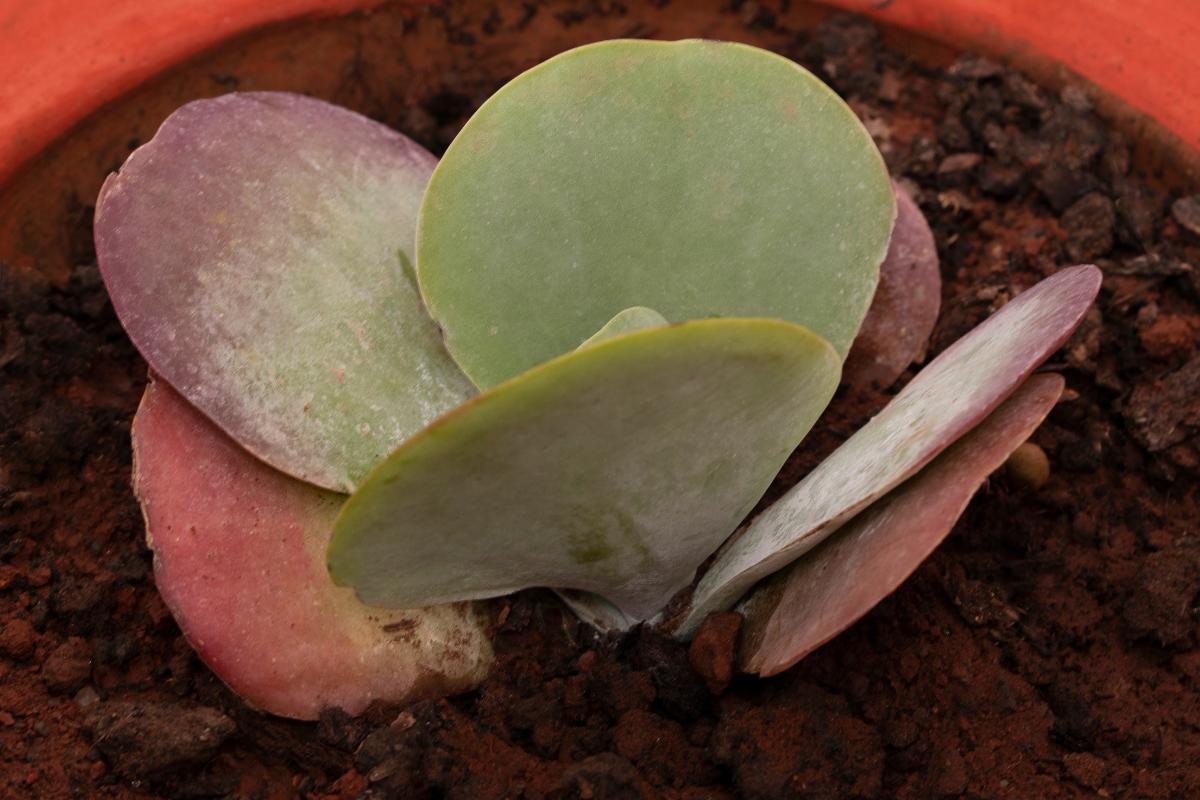Paddle Plant Care - Kalanchoe Thyrsiflora


Also known as desert cabbage, flapjacks and white lady, the paddle plant (Kalanchoe thyrsiflora) requires full sun exposure, low irrigation and a rich substrate with good drainage. We can also propagate the paddle plant via seeds or plant divisions. With all this care information for paddle plants, it's helpful to know they are low-maintenance indoor plant, although they can grow outdoors in warmer climates. Despite this need for a warm environment, they are relatively resistant to climatic variations. thedailyECO explains everything you need to know with our paddle plant care guide which explains Kalanchoe thyrsiflora succulent care and propagation.
Characteristics of paddle plant succulents
Before we discover how to care for kalanchoe succulents, we can provide a little background information on paddle plants in general:
- As a type of succulent plant, paddle plants store water in their leaves. This acts as a reserve for adaptation to dry environments. These leaves are arranged in a rosette shape, each one pointing upwards. This reduces the area exposed to the sun which is more prone to losing water. The leaves are short, fleshy and paddle-shaped, being green to grayish in color. They are smooth and covered with a white dusty substance called pruina which serves as sunscreen to tolerate constant sun exposure in their natural environment. In the winter season the margins are tinted red as an adaptation to the lower temperatures.
- Paddle plants produce dark yellow, urn-shaped flowers which are arranged in a dense inflorescence of several individuals. It blooms from late summer to autumn and continues until winter. In addition to offering these flowers a great attraction, they serve as attractants for butterflies, bees and other types of pollinators. They give off a sweet aroma. The flowers develop from a tall stem up to a meter high which appears during the flowering season. As the stem grows, the leaves become smaller towards the tip. The flowering time is long and the flowers last up to six months. After this time, the plant will dry out in order to produce its seeds, until it dies completely.
- Kalanchoe thyrsiflora is often confused with Kalanchoe luciae, the latter also being known as a paddle plant. It differs because the latter has almost round leaves compared to those of K. thyrsiflora, which are slightly more elongated. Additionally, the flowers of K. luciae are greener and have 8 anthers, while K. thyrsiflora has 4 anthers. K. luciae is much more common in gardens and nurseries.
If you have read the description of this succulent and want to grow your own, you can use the affiliate link below to purchase a fully-rooted specimen:

Paddle plant light and location
Paddle plants require full sun exposure, so it can be kept outdoors in temperate areas. They are quite tolerant of cold nights and some frosts. During these conditions, the plant will enhance the red tint. However, if you have regular low temperatures, it is best to keep this plant indoors. It must be beside a window where it can have as much light as possible.
This succulent is often incorporated as an element for rock gardens or grasslands, bringing together several individuals to give a more robust and striking appearance. It is also good as a potted or container plant.
Paddle plant soil and fertilizer
In its natural environment it grows in sandy areas, so you have to prepare a similar substrate at home. Equal parts of worm castings and peat are integrated. Some draining material such as vermiculite , sand, tepojal or lava rock for plants need to be added for drainage. You can learn more about How to make a substrate for cacti and succulents here.
Liquid fertilizer can also be added in late summer in the growing stage to enhance flowering, but it is not mandatory. Learn more with our article on the best homemade organic fertilizers.

Paddle plant watering
Like other types of succulent, paddle plants have a high tolerance to drought thanks to the fact that it stores water in its leaves. It is even recommended that it go through some induced drought so that it develops vivid colors. You should wait for the substrate to dry between watering to avoid excess saturation of the substrate. This will vary depending on where you live, but can range from one to two times a week.
Paddle plant leaves are soft
Soft leaves in paddle plants can be caused by several factors. Analyze which one could be the most valid for your case:
- Too much watering: these plants do not need plenty of water. If you water them too much, this may be the cause. Space out the irrigation of the paddle plant more and you will see improvement.
- Bad substrate: if your substrate does not contain any draining material, you will be promoting the retention of harmful moisture for your plant. Prepare a new mixture with the previous instructions.
- Lack of sun: the leaves may be weakened if you have them in shade or partial-shade. Take them out directly into the sun.
If you do not have many areas in the home with good sunlight access, you can choose a type of partial-shade plant which might fare better.

Paddle plant propagation
There are two main ways to propagate paddle plants. It should be noted that cuttings are not usually effective. The best ways to propagate paddle plants are:
Plant division
This plant can reproduce by division. Each individual plant usually releases small offspring at the base. These can be separated when they appear. You have to dig up the colony of paddle plant to separate it from the base, being very careful not to damage any part of the plant. Once separated, they are placed in a different substrate composed of a dry potting mix for succulents. This medium will help them produce roots. It must always be kept moist until it has new roots. Only then it can be moved to its final substrate.
Seeds
The other alternative is to buy seeds of this species or wait for the plant to die to obtain them directly from the plant we already have. They are very small and look almost like dust. They can be harvested as soon as the fruit capsules open. The entire head is cut off and stored in a paper envelope, where we will wait for it to release all the seeds and also for them to dry completely.
These seeds are placed in a seedbed or seedbed with worm castings, a nutrient-rich substrate that will make them germinate very quickly. Irrigation is done with a fine spray bottle to slightly moisten the substrate. The time to propagate paddle plants is in the spring. This is the most recommended option to propagate Kalanchoe thyrsiflora.
Learn how to care for a propagate other types of succulent plants with our articles on caring for ghost echeveria and plush plant care guide.
If you want to read similar articles to Paddle Plant Care - Kalanchoe Thyrsiflora, we recommend you visit our Plant care and cultivation category.
- Baldwin, D. L. (2013). Succulents Simplified: Growing, Designing, and Crafting with 100 Easy-Care Varieties. United Kingdom: Timber Press.
- South African National Biodiversity Institute. (n.d.). Kalanchoe thyrsiflora Harv. Retrieved from: https://pza.sanbi.org/kalanchoe-thyrsiflora-0








